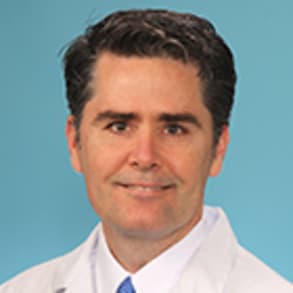Dr. Jay Keener discusses the effects of Range of Motion (ROM) in Reverse Total Shoulder Arthroplasty (RTSA) utilizing different positions of both baseplate and humeral components in severely retroverted glenoids utilizing BLUEPRINT™ Preoperative Planning software.
Wright Medical Clinical Summary
To view online : https://www.jshoulderelbow.org/article/S1058-2746(17)30590-6/fulltext
Jay D. Keener, MD, Brendan M. Patterson, MD, Nathan Orvets, MD, Alexander Aleem, MD, Aaron Chamberlain, MD
SKU: AP-013581
My name's Jay Keener. I'm a Children elbow surgeon at Washington University in ST Louis. I'm gonna talk to you today about a study we performed published in general Children Elbow Surgery, looking at optimizing range of motion in patients with the form Glenn oId in the setting of reverse shoulder Arts of Plast E. And I think the studies valuable because it shows the power of the blueprint technology and predicting range of motion and potentially clinical outcomes in these patients. So basically what we did is we took 10 patients with severely deformed Glenn Lloyds with primary osteoarthritis. They were all virgin shoulders, no revision cases, and we basically planned them in a way to try to optimize range of motion. And we looked at at a combination of of Glen oId and Huma RL variables. And so what we wanted to do was to determine the optimal Glenn oId version because these were primarily axial plane deformities and the optimal Glenn oId lateral ization. Initially and then, once we determine based on range of motion analysis what the best Glenn oId parameters were. Then we looked at Huma RL parameters that might correlate with better range of motion. So, um, in summary, basically, we found that the more lateral ized you were on the glen oId the better you were with range of motion. Pretty much across the board. We also found that the sweet spot in terms of Glen oId version was slightly retro vert id. So, um, uh, the these were shoulders with B two, B three and C deformities in the mean version deformity was upwards of 30 degrees. So three ideal implant position in terms of range of motion prediction was neutral to slight retro version. So that involves a fair amount of correction. Um, on the human RL side, we found that the more various angle of inclination tended to produce better ranges, ranges, emotion. Um, that was probably the biggest finding eso There's a value in going 245 degree next shaft angle versus 100 55 for example, on 135 was better than 145 degrees. So, obviously, um, this type of a study does not replicate soft tissue. Tension on does not tell you stability. So you have Thio. You have to take this data with a grain of salt. This is purely range of motion analysis, but, um, in summary, I think the clinical application is really valuable. So when you are dealing when you're wanting toe implant a reverse in the setting of significant Glenn oId erosion from primary osteoarthritis, uh, you can optimize range of motion by keeping the Glen oId lateral. So whether you accomplish this with an augmented base plate or a bio r s a construct, the more lateral you stay, the more global improvement you're gonna have on range of motion pretty much across the board. Also, as you become as you come or lateral, you have better soft tissue tension which allows you to choose um or various next shaft angle potentially. And this study showed that thes more various next shaft angles also optimized range of motion, especially motions that are limited by abduction impingement on motions that creates scapular gnashing such as abduction extension and external rotation of the shoulders
Related Presenters
